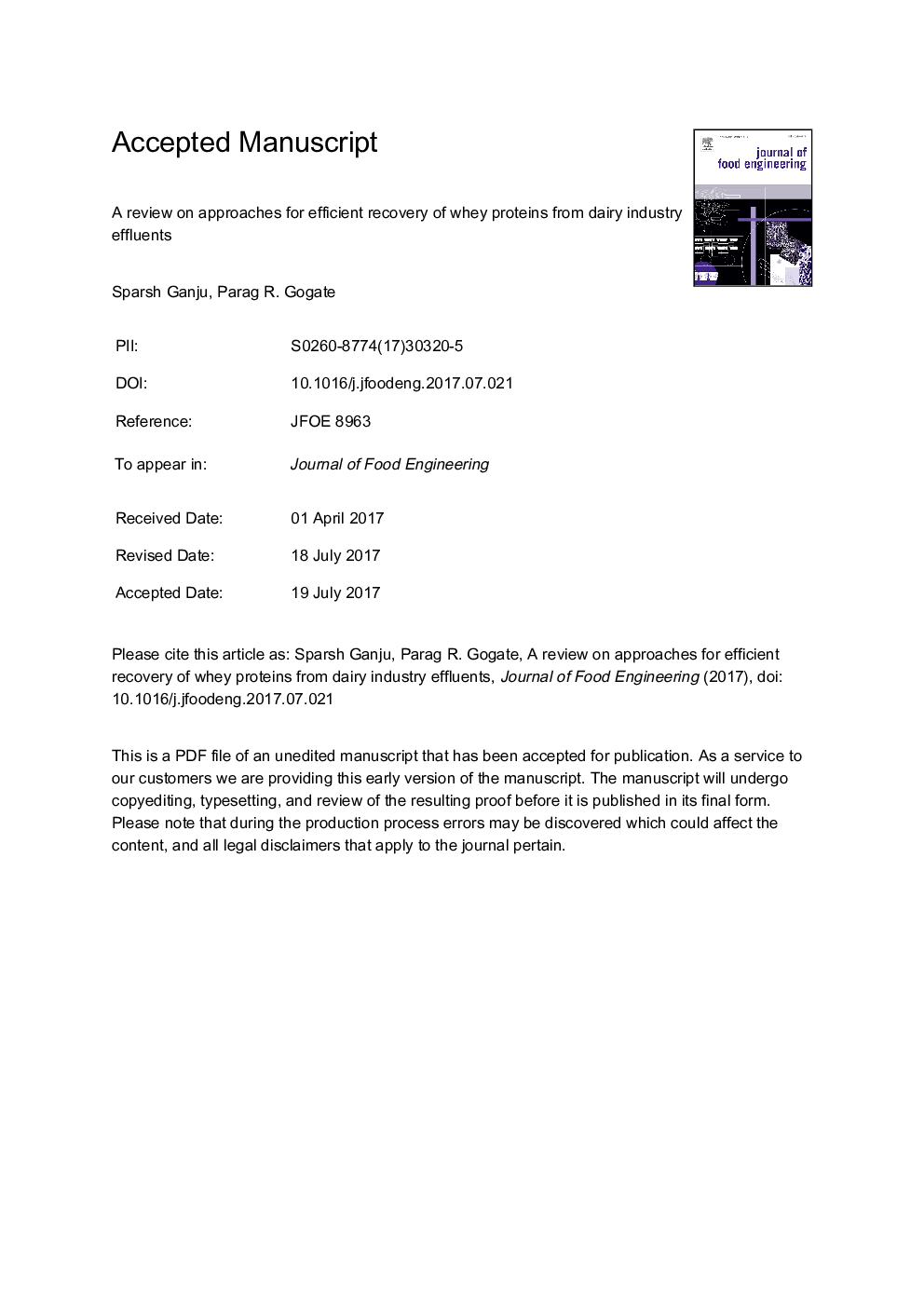| Article ID | Journal | Published Year | Pages | File Type |
|---|---|---|---|---|
| 4908905 | Journal of Food Engineering | 2017 | 48 Pages |
Abstract
A significant proportion of waste generated by the dairy industry is in the form of whey, which creates a lot of environmental concerns especially in developing countries. The most significant problem is its significant BOD content ranging from 35,000-55,000Â mg/L. Considering the vast quantum of whey produced globally (about 145 million tons per year), it is imperative to propose suitable approaches which can be used to recover valuable products such as lactose or proteins and also help in reducing the environmental concerns. The current review provides an in-depth understanding into different available approaches for recovery of whey proteins also highlighting the recent advances. Special emphasis has been made on the critical analysis of the membrane separation methods which are currently accepted as the most viable methods for whey protein recovery. In addition, some novel approaches for intensified whey protein separation have also been discussed. The work also presents the engineering aspects related to the various methods of pre-treatment (increase the shelf life of whey and also help in mitigation of fouling) and post-processing of whey proteins (spray and freeze drying) for effective utilization as valuable products. Discussion has also been provided on the optimization of operating parameters so as to maximize the recovery efficacy and on the reactor configurations with possible potential for scale up. Overall, it appears that there is considerable promise for developing commercial approaches for the recovery of whey proteins conforming to the principle of wealth from waste.
Keywords
Related Topics
Physical Sciences and Engineering
Chemical Engineering
Chemical Engineering (General)
Authors
Sparsh Ganju, Parag R. Gogate,
